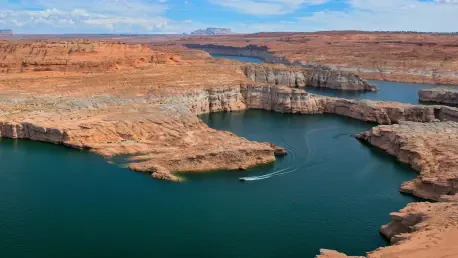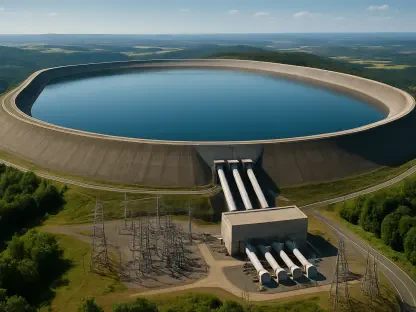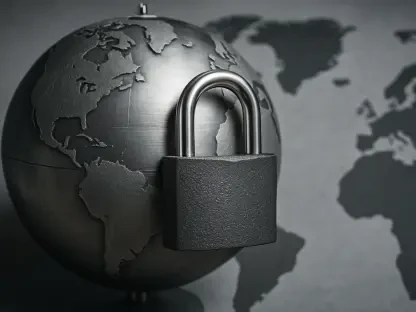Amid escalating drought conditions in Utah, significant concerns have emerged regarding water availability, particularly in the state’s southern region. Experts and state officials have voiced apprehensions about the consequences of these drought conditions on local communities, agriculture, and broader water resource management.
Understanding Utah’s Drought Crisis
Historical climate patterns in Utah reveal that snowpack levels play a crucial role in determining annual water supply, particularly with the state’s semi-arid climate. Traditionally, Utah relies heavily on snowfall to replenish its water sources, which then sustain local ecosystems and human activities throughout the year. The significance of snowpack is particularly evident in how it supports the water levels of major reservoirs, including Lake Powell.
Lake Powell is an essential water body for Utah and neighboring states, providing critical water supply and hydroelectric power. A deeper analysis of the ongoing drought and its impacts on this reservoir underscores the severity of the situation and the urgent need for effective responses from local and state authorities.
Intensifying Drought in Southern Utah
In recent years, southern Utah has faced notably lower snowpack levels compared to the northern part of the state. Data from the Utah Division of Water Resources indicate a stark disparity, with northern Utah benefiting from near-average snow water equivalent, while some sites in southern Utah reported figures as low as 1% or even 0%. This substantial difference has significant implications for local water availability and conservation efforts.
The intensifying drought conditions in southern Utah directly affect local communities and agricultural activities, raising concerns about water reserves and food production. Experts suggest that heightened awareness and stringent water conservation measures are essential to mitigate the adverse effects of the drought.
Struggling Reservoirs and Water Management Challenges
Utah’s reservoir levels highlight the geographical differences in drought impacts. While northern Utah maintains relatively higher reservoir capacities, southern Utah’s reservoirs struggle to meet demands, with several below 50% capacity. Effective water management strategies are crucial in addressing these regional variations and ensuring that water resources are allocated efficiently.
State agencies have implemented various strategies to manage water resources, such as promoting water-saving technologies and encouraging voluntary reductions in water use. However, maintaining adequate water supplies for diverse needs remains challenging, particularly in light of the ongoing drought.
The Critical State of Lake Powell
Lake Powell’s current water levels present a concerning trend, currently at about 32% capacity and expected to decline further. This poses a significant threat to Glen Canyon Dam’s ability to generate hydroelectric power, a critical energy source for the region. Furthermore, the reduced water levels at Lake Powell could disrupt Colorado River water allocations and impinge on existing interstate agreements, exacerbating the water scarcity issue.
The deteriorating situation at Lake Powell necessitates a coordinated response between multiple stakeholders to balance water distribution and sustain critical water-dependent infrastructures.
Potential Emergency Declarations and State Responses
Utah Governor Spencer Cox has considered issuing an emergency declaration to address the severe drought conditions. Such a declaration could mobilize resources swiftly and provide much-needed support for affected communities and agricultural sectors. Previous executive orders in 2021 and 2022 have laid the groundwork for accessing state and federal emergency resources to combat drought impacts.
However, any emergency declaration now faces legislative constraints. A law passed in 2021 limits such declarations to 30 days unless extended by the legislature, which may require convening a special session to sustain long-term drought responses.
Key Takeaways and Strategic Responses
The insights from Utah’s ongoing drought conditions emphasize the need for strategic and collaborative water management. Key recommendations include enhancing water conservation efforts, investing in water-saving technologies, and fostering community awareness about the critical need to conserve water resources.
Local communities and individuals can play a significant role by adopting water-efficient practices, delaying irrigation until necessary, and supporting state-led initiatives. Such actions will collectively contribute to mitigating the drought impacts.
Reflecting on the Ongoing Drought Crisis
Addressing Utah’s drought demands immediate and proactive measures. The continuing decline in water levels at Lake Powell and other reservoirs calls for sustained efforts in water conservation, strategic resource allocation, and regional cooperation. Future considerations should focus on building resilience against drought, ensuring long-term water security, and enhancing collaborative policymaking to safeguard Utah’s vital water resources for coming years.









